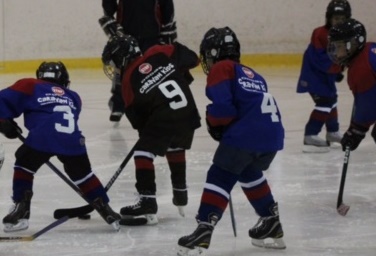THERE ARE MANY BENEFITS FROM REDUCING THE ICE SIZE IN PRACTICE
By Ontario Minor Hockey Association, 09/12/16, 3:00PM EDT
It’s tough to imagine yourself on the ice as a Tyke or Novice player, but try to remember what it was like. From their point of view, standing on one end of the rink and looking down to the other can feel like the distance is almost miles away. Younger players become exhausted easier because the ice surface they play on is too big for where they are in their development. Some solutions to fix this are by using small-area games during practices, and there are many unique ways for coaches to implement these new elements.By cutting the ice surface in half, or even into thirds by flipping the playing area from vertical to horizontal, small-area hockey is growing in popularity.
There are many benefits that playing in a small area can offer including more time being spent with the puck as well as working on passing and puck control. Because the distance from end-to-end is much smaller, speed is less of a factor and using your teammates becomes more important. With regular sized ice, the distance between passes becomes greater and it can be harder for younger players to be accurate. By the time they reach the end for a scoring opportunity, they are already exhausted. More time is spent chasing the puck around on the ice instead of it being on a player’s stick.

Using small area games allows for coaches to adjust the size of the playing surface as well as the rules and drills as they see appropriate for their team. Small area games let players be more creative with the puck and learn how to get out of tight situations. Since the playing surface is smaller, players must be more careful with possession and keeps them moving.
Small area games effectively mimic the battles that a player will encounter during a real game. Players will learn the importance of footwork and making smart passes. Defencemen will figure out how to cut off passing lanes, which in turn grows the creativity of the offensive players. Forwards will need to support each other by going to the puck instead of waiting for it to come to them and how to properly place themselves.
OMHA Related Links
Coaches Page: more resources for coaches
Podcast: Age Appropriate Ice